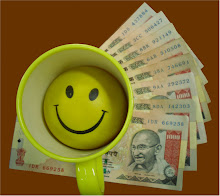For everyone who expected Budget 2010 to lay out the roadmap for goods and services tax (GST) rollout, there was much disappointment. Not only did the Finance Minister Pranab Mukherjee sound cautiously optimistic about April 2011 rollout, there was very little in form of explicit steps in that direction other than alignment of rates for goods and ces as well as expansion of the ambit of service tax.
It can be argued that if the government was serious about April 2011 rollout of GST, it should have introduced a comprehensive list of services for taxation, rather than continuing with a piece-meal approach of adding a few more services to the list like the previous years.
A comprehensive list of services is critical for implementation of GST. It can also be argued that when GST is at the threshold, government should not have tinkered with the rate or given more exemptions. The changes to levy of central excise are seen reminiscent of the pre-liberalisation era by some economists — when government acceded to demands of various business lobbies.
But everything is not as simple as it appears. Revenue was a major consideration this year, and so it was necessary to raise rates. The increase in excise rate and expansion of service tax list, together with improved buoyancy, will yield the government additional revenues of Rs 40,000 crore over revised estimates.
A major criticism of the budget is the number of exemption that has been given — leading many to believe that distortions have increased. But therevenue department had its reason for this: exemptions in many of these cases will actually be revenue positive for the government for it would serve to curb fake claims by manufacturers.
A case in example is mentha products, where the Central Board of Excise and Customs (CBEC) found manufacturers in National Capital Region claiming refund of taxes for goods supposedly sent to tax free zones such as Jammu & Kashmir. In reality, there would be no such transfers or it may be far too small.
Revenue department’s objective of expanding the list of taxable services was to prepare people for a scenario when most services would be taxable. For instance, if India were to adopt international definition, then all economic activity that is not supply of goods would amount to supply of service, and most of them should be taxable.
The question that arises then is why did the government not opt for a comprehensive list of services for taxation. Finance minister stopped short of explaining why he did not exercise that option. The reason, it emerges, is that there is no consensus within therevenue department on whether it should opt for a negative or a positive comprehensive list.
Many countries prefer a negative list for ease of administration but both kind of lists have their merits and problems. Opting for positive list would require the tax authorities to create an exhaustive list to ensure all services that need to be taxed are included in a code with appropriate description akin to harmonised system of nomenclature for goods. The trouble with positive lists is that they can give rise to disputes between tax authorities and service providers.
In the case of a negative list, the revenue department can say all services other than the exempt ones would be subject to tax. The trouble with a negative list is that governments may overlook some sensitive services that need to be exempted. In any case, both kind of lists need to be updated on a regular basis, the positive list more frequently as new services emerge.
Extending the scope of service tax on real estate and renting, CBEC insists, was again a measured move towards GST — in the medium-term the government expects to replace most taxes on real estate transactions with GST, as recommended by the Thirteenth Finance Commission. Such move is also necessary to enable builders can claim credit on taxes paid on inputs such as cement and steel.
So where does the plan to migrate to GST stand? The Centre and the empowered committee of state finance ministers continue to be at loggerheads over several issues particularly the threshold for Central and State GST.
The empowered committee wants the threshold at the Centre for goods to continue at Rs 1.5 crore and for services at a suitable high level (meaning higher than the prevalent Rs 10 lakh), while thethreshold at the states is to be Rs 10 lakh. This is unacceptable to the Centre. It wants a common threshold of Rs 10 lakh for both goods and services at both the central and state level to enable a suitable low revenue neutral rate of tax. It argues that small businesses will prefer to pay GST rather than opt for compounding schemes to allow their customers (B2B transactions) to claim for taxes paid on inputs.
What is however reassuring is that there is a sense of urgency at the Centre to rollout GST by April 2011 — its primary concern being to ensure the deal is sewn up before West Bengal Assembly elections. This is because Asim Dasgupta is seen as the man who can bring states on board for GST rollout. There is now no certainty that the Left will formthe government once again, and no other state finance minister inspires the same level of confidence as Mr Dasgupta.
http://businessfinanceindia.blogspot.com/
http://businessfinanceindia.blogspot.com/


No comments:
Post a Comment